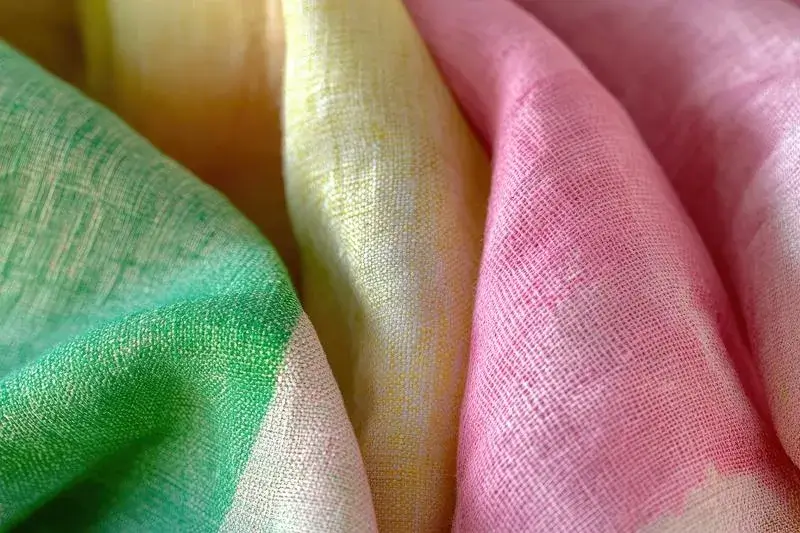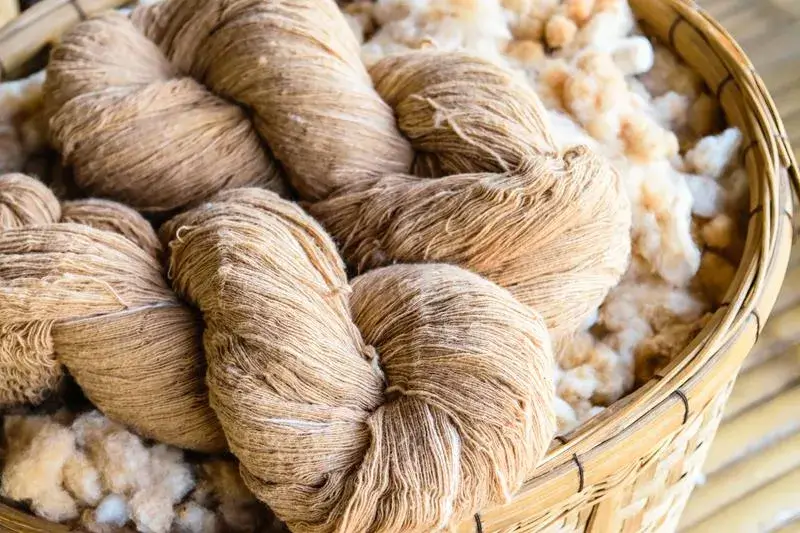Turning banana fibers into fabric isn’t as simple as it sounds—it takes multiple steps, careful technique, and plenty of skill. But the payoff is amazing: a planet-friendly material that’s tough, soft on the skin, and perfect for everything from chic fashion to comfy home decor. Let’s see what happens.
Collecting raw materials: the beginning of the journey
The process starts when the banana plants are renewed, or when the fruits have ripened and it’s time to trim the plantation. At this time, the tall green stems, which can reach two to three meters in height, are harvested by hand or machine to respect the environment and keep nature in balance.
Once cut, the green stems are laid out under the sun to dry naturally for several days. As they lose moisture, they grow lighter, easier to handle, and perfectly prepared for the next step in their transformation.
Getting ready to unlock the fibers
Ever since all the stems have been dried, they have been stripped of the outer bark – a sturdy and rough skin enclosing the inner soft part. The soft part – mesophyll – contains long, thin strands of cells which will become the foundation of future tissues.
The stem is then carefully separated into sections, which is more manageable. Wooden brushes or knives are sometimes used to remove the outer layer to get the inner fibers ready for the next stage of the process.
Pulling threads from nature: a careful craft
Now comes the fun part — removing the fibers! In the past, this process was done entirely by hand — shaking the stems, rubbing them against stones or wooden boards. Today, we have machines that instantaneously crush or specialize equipment for fiber extraction that, in the gentlest of manners, separates the soft inner bast from the fibers. The whole process becomes as enjoyable as sculpting or weaving, which is slow, gradual, and requires utmost satisfaction.
Sometimes, after completing the extraction process, a mild chemical treatment — alkaline or enzymatic — is applied to dissolve any remaining bast without damaging the fibers. The fibers are washed again to ensure that all the chemicals and residue are gone. Finally, the fibers are spread out to dry in the sun or in specialized drying rooms until they finish smooth and soft and ready for the next phase of designing the fabric.
Fiber prep: from raw to refined
Dried fibers are aligned — often with the help of instruments — according to length, thickness, and other parameters. This step is crucial in the making of seamless, resilient threads. It is quite remarkable how the mere application of steam, or the tiniest of some specialized treatments, can bind the fibers together during the twisting phase of thread formation.
Then what? Long yarns, ready to be made into beautiful fabric. This step involves time and careful control, getting each fibre to move into a twist, with no knots or tangles, to become a perfect thread.
Spin and weave: turning threads into yarn
The magic starts here—transforming fibers into threads. This can be done manually, by twisting each fiber between the fingers, or with rudimentary spinning devices. At the other extreme, large-scale production uses automatic spinning machines with different settings. From delicate threads for sewing to robust ones for embellishments, each is designed for lasting strength and pliability.

Weaving magic: bringing yarn to life
Once ready, the threads weave together on the loom, creating a tapestry as intricate as a finely solved puzzle. The warps carefully arranged in conjunction with the distinct wefts lead to designed wefts of durable, organic and eco-friendly textiles.
Banana fiber fabrics can have many different appearances, a smooth satin feel, or a rough surfaced finish that are especially nice for decorative uses. Fabrics can be woven and dyed in various natural colors, or they can be softened for more comfort. More than style, each piece carries a touch of sustainability.
Final stage: turning fabric into fashion
It turns ordinary, everyday items into fashionable, sustainable treasures that are filled with practical benefits:
- Eco-friendly: Biodegrades naturally and softly on the earth.
- Nature-strong: Resilient texture that keeps its shape.
- Beautifully textured: Think the elegance of linen or jute, with a unique natural relief that catches the eye.
- Skin-friendly: Hypoallergenic and safe for all ages.
- Quick-dry comfort: Sweat vanishes, fabric stays light and dry.
- Versatile: Perfect for fashion, accessories, or cozy home decor.
However, creating banana fiber is not just a hobby. It is true artistry. Every one of the many steps – the meticulous cutting of the banana stem to the delicate spinning of the fiber into thread – requires the virtues of patience, a little skill, and a commitment to a craft. The result? A planet-loving fabric that blends elegance, resilience, and comfort.

Author

Alexandra Mukhina
Content writer on https://rythmoftheworld.com Experienced linguist and translator with a knack for crafting and refining diverse content. My goal is to produce engaging, informative texts that captivate readers. Passionate about reading, music, traveling, and exploring new avenues of personal growth.



